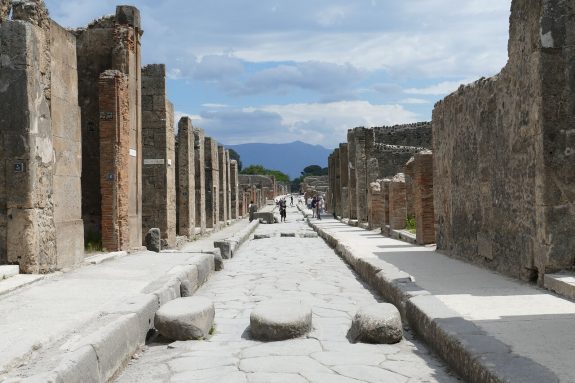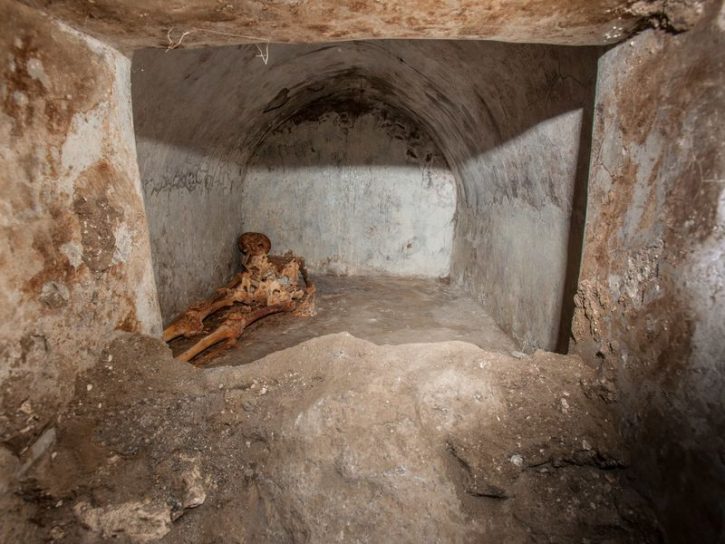Lingering Peculiarities: Slavery and Manumission in the Roman Empire

The question does not bear asking, but in a global economy greased by what has been termed disposable people, the past’s previous examples of the same may be a country worth visiting. The prod along for such a journey came with the discovery of yet another gem from the ruins of Pompeii. The news headlines were ravenous in consuming the details about the history of an individual who, having been a slave, obviously went on to do rather well for himself. It read like a tale of social mobility, and would have sent the likes of those who spoke about the paralysis of social death spinning in the grave.
First, the fanfare. The skull of one Marcus Venerius Secundio was praised as “the best-preserved human remains ever discovered in Pompeii.” They were found in an ancient tomb in the necropolis of Porta Sarno. The marble slab found at the pediment of his tomb had an inscription that sent the news outlets into states of excitement.
The Minister of Culture, Dario Franceschini, was so enthusiastic as to be insufferable. “Pompeii never ceases to amaze, and has confirmed her place as a story of redemption, as an international role model, and a place where research and new archaeological excavations are taking place once more, thanks to the many professionals in the field of cultural heritage, who with their work never cease to produce extraordinary results for the world which are a source of pride for Italy.”
Then, the career aspect of Secundio. The gravestone’s inscription, in the nature of such etchings, is filled with many achievements. He had been a slave. Post-liberation, he became a custodian of the Temple of Venus. He was admitted to a college of priests, the Augustales, and organised ludi, entertainment events run in Greek and Latin.

Skeleton of freed slave (Image from timesofisrael.com – Photo by Alfio Giannotti/Pompeii Archeological Park via AP)
The director of Pompeii’s archaeological park, Gabriel Zuchtriegel drew the logical conclusion from the finding. “So here we see evidence of a transformation of social ranking … he is showing that he became a different person, that he made it in life.” Admittedly, the status of the slave was “humiliating” but it was clear that Secundio had come good.
Such finds are impressive, but stories about manumitted slaves who went on to become social climbers and society achievers in the Roman Empire are far from unusual. Mary Beard has made a habit of reading Roman gravestones full of conversational detail, many showing an empire filled with go-getting types and bounders. Indeed, she has made referring to tombstones fundamental to understanding an empire not interpreted purely through the records of the great, foolish and sadistic.
The institution of Roman slavery was, more broadly, a strange beast. The living standards of those in bondage ranged from the atrocious and vulnerable to luxurious and cosseted. Ethnically, they hailed from all corners of the imperium.
During periods of the empire, notably the Imperial phase, slaves were in shorter supply given fewer wars. Wars presented opportunities for enslavement and an addition to the labour pool. The diminished supply meant an appreciation in value and a focus on “home breeding.” Excessively cruel treatment was discouraged, even prohibited by some regulations. None of this ever overcame that most evident of realities: that a slave lacked self-possession, subject to an owner who could exercise violence when he chose to do so.
Beard notes that most baffling of tendencies in Ancient Rome: to generously manumit those in bondage. Such individuals were granted citizenship, a point grandly illustrated by the emperor Caracalla’s decision in AD 212 to grant Roman citizenship to all free persons in the empire. This was in stark opposition to other powers such as Athens, which could never be accused of that same tendency, let alone dolling out citizenships. The result was a political entity of stunning ethnic diversity that served to cause a good deal of anxiety and self-questioning.
The reasons for such emancipation are not clear. Doing so might have arisen from “coldly practical considerations,” as Beard calls them. Older slaves would be granted freedom because of a lack of productivity and cost of retention. Slaves might also purchase their own freedom through their savings. For those working in domestic conditions rather than the harsher conditions of agriculture, slavery would not be a station for life.
In Pompeii, Secundio’s body proved enthralling for its preserved state, with skeleton generally intact, white hair and even some remains of an ear. Unusually for adult Pompeiians, he was not cremated but partially mummified and entombed. Zuchtriegel speculates that, as tomb burial was reserved for children and infants, Secundio’s importance must have been quite something though Llorenç Alapont, an archaeologist based at Universidad Europea de Valencia advances a hypothesis: that Pompeii, at that time, permitted a certain freedom in such matters. The list of questions merely grows.
Like what we do at The AIMN?
You’ll like it even more knowing that your donation will help us to keep up the good fight.
Chuck in a few bucks and see just how far it goes!
Your contribution to help with the running costs of this site will be gratefully accepted.
You can donate through PayPal or credit card via the button below, or donate via bank transfer: BSB: 062500; A/c no: 10495969










3 comments
Login here Register here-
Lawrence Roberts
-
Michael Taylor
-
calculus witherspoon.
Return to home pageThe interesting thing about him was that he was putting on Greek performances for a largely Roman audience, remembering that highborn Romans spoke Greek domestically between themselves and that there was a high percentage of Greek doctors and engineers working for the empire.
Pompeii was something of a holiday resort which I imagine had a lot of retirees and I would like to think that the Greek plays were still popular.
Lawrence, their most popular pastime was having sex. The city was overflowing with brothels.
My take on the article is, “gold watch”.
The outward appearance of an economy is different than today, but you suspect the underlying similarities may have been greater than meets the eye.